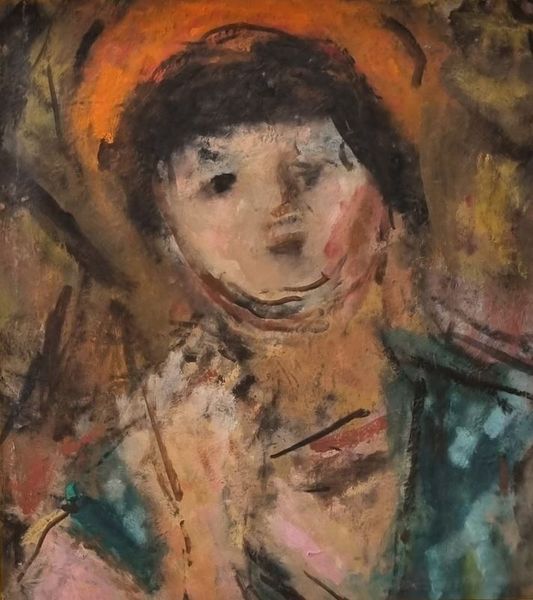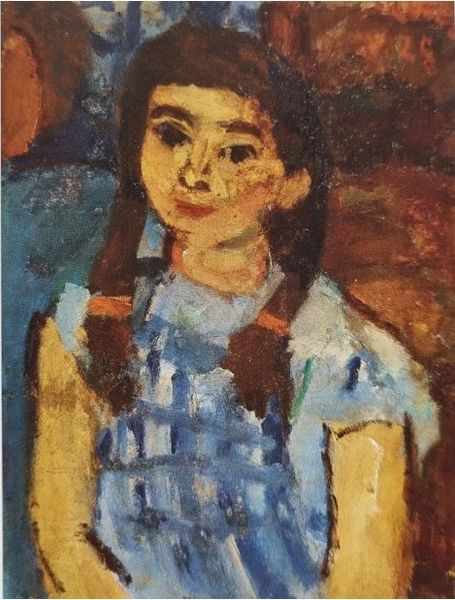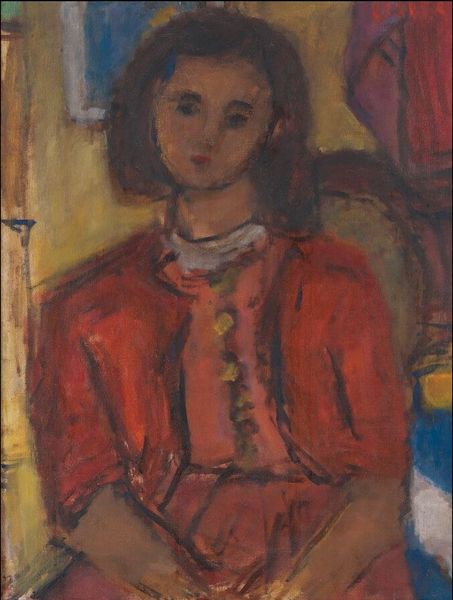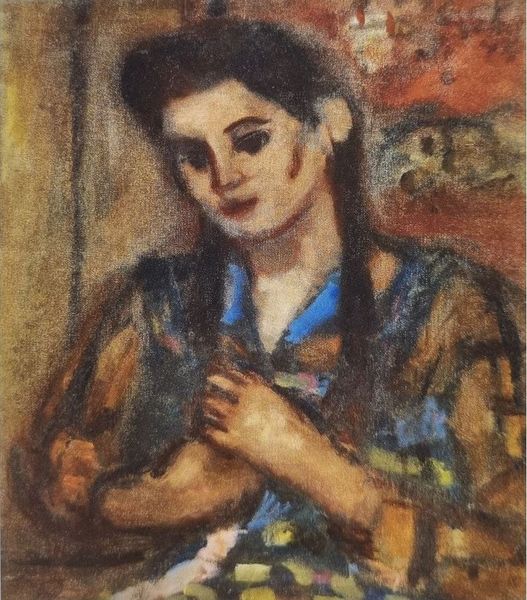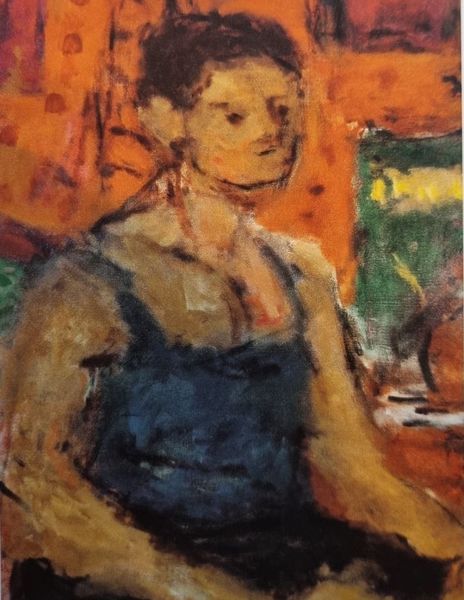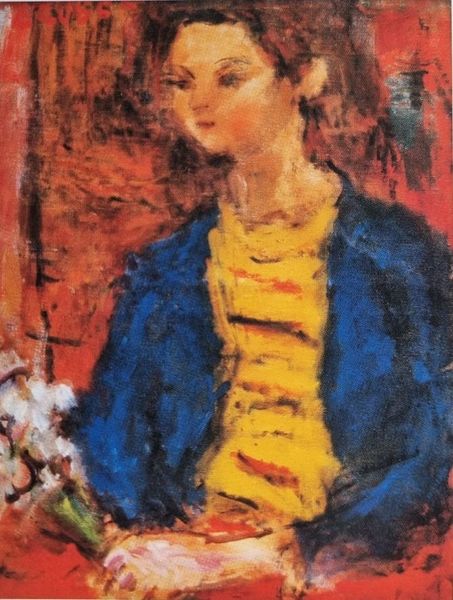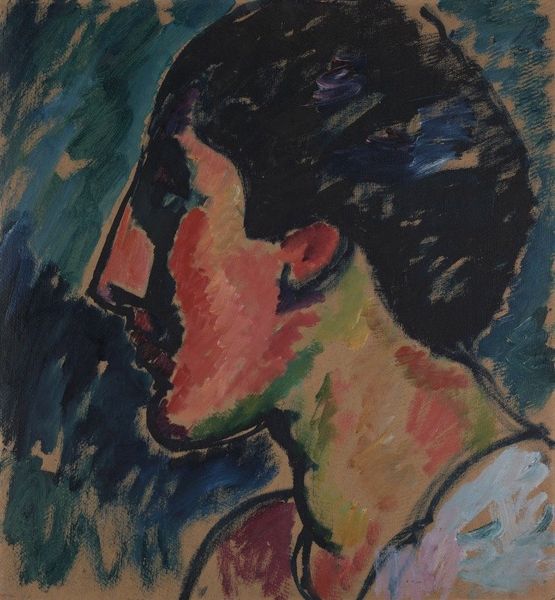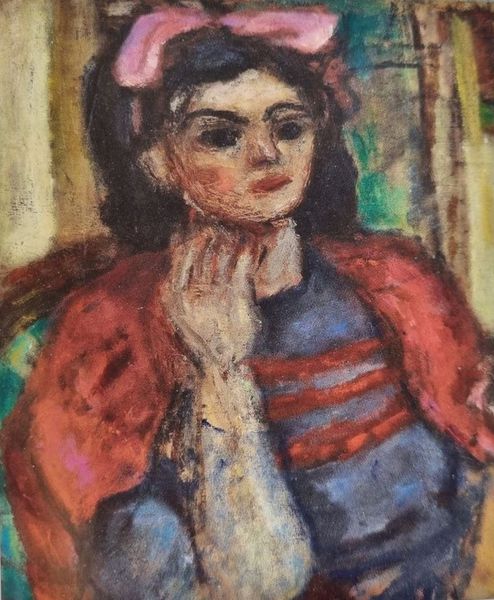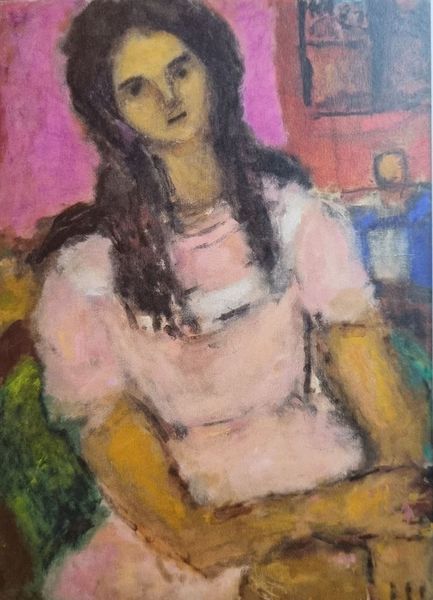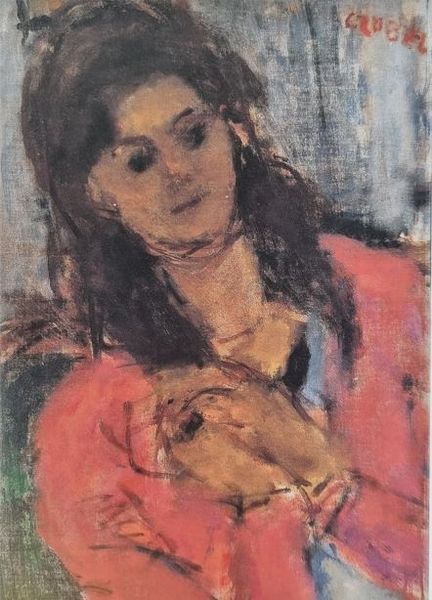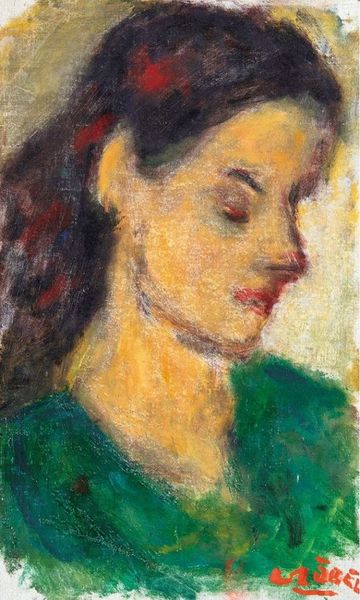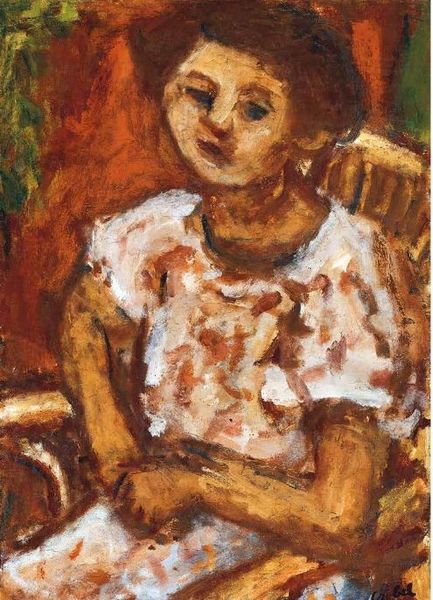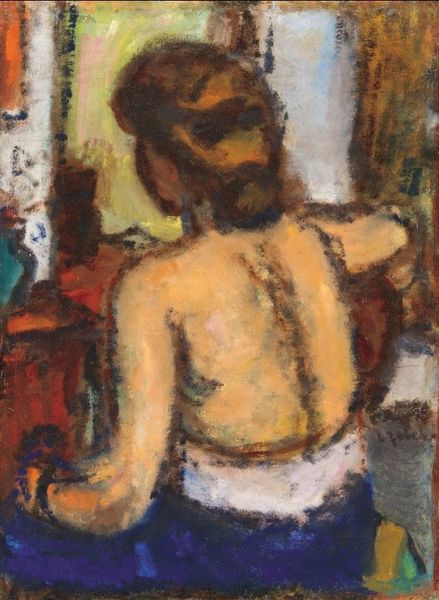
painting, oil-paint
#
portrait
#
painting
#
oil-paint
#
figuration
#
expressionism
#
modernism
Copyright: Bela Czobel,Fair Use
Curator: Standing before us, we have Béla Czóbel's "Woman in Green Dress," an oil painting characterized by its expressive brushwork and intriguing use of color. Editor: It's instantly captivating! The palette is subdued yet there’s a restless energy—an interesting combination of the formal dress against the loose strokes. Is it melancholy or is the work unresolved? Curator: From a materialist perspective, what draws my attention is Czóbel's handling of the paint. The visible, almost frantic, brushstrokes seem to convey the subject's emotional state. We might ask what the availability and cost of oil paints at the time might have influenced such an active application. And what sort of impact does the scale have on production value of such expressive portraiture. Editor: I agree it invites questions about Czóbel's cultural influences, and Expressionist styles gaining traction in Europe. He positions her not in aristocratic splendor, but domestic intimacy. There is little documentation to give certainty of dating, this, as a social document, what can this painting tell us about modern life, the sitter’s class status and role during such transformation? Curator: Considering Expressionism, the painting certainly diverges from classical portraiture in its depiction of the woman’s pose and abstracted, generalized features. Look at those pink swathes creating the background; you have the sense the support and layers were integral to constructing depth here. The raw materiality creates its own mood. Editor: Yes, those visual elements set against a historic shift, where mass communication had new reach, offering avenues of identity creation through consumer culture. Is this image representative of women from different socioeconomic layers accessing new personal spaces and roles outside of domestic constraints? What narratives emerge and who are they targeted towards through public imagery campaigns? Curator: A telling piece of art making—the way in which color interacts with form is just one component of a more comprehensive composition. This portrait stands out. Its surface almost pulsating and breathing with raw brush strokes, so palpable you could nearly lift them off the support yourself! Editor: It gives us much to think about! And I, for one, hope viewers will continue to probe this portrait in light of rapid societal change.
Comments
No comments
Be the first to comment and join the conversation on the ultimate creative platform.
